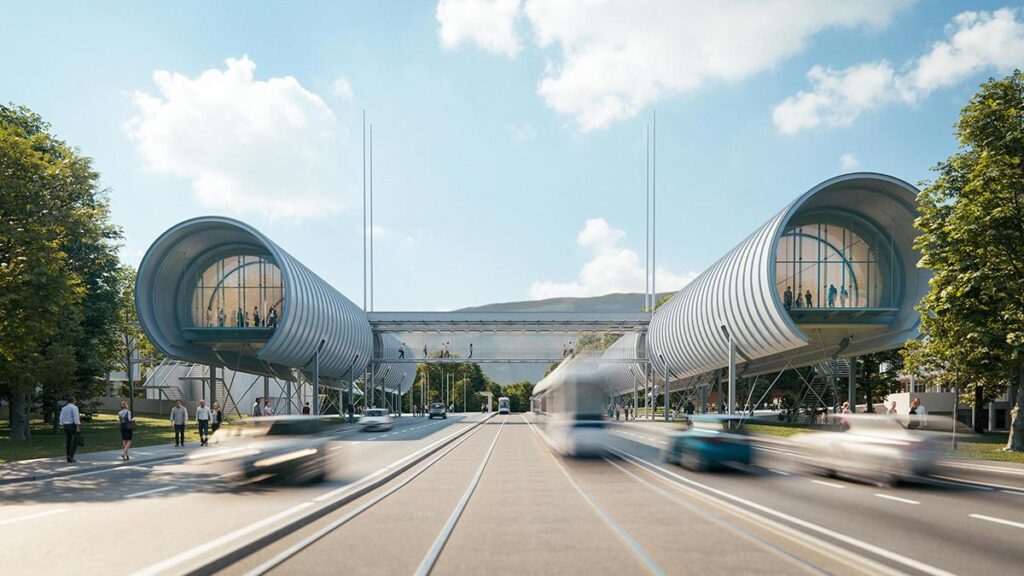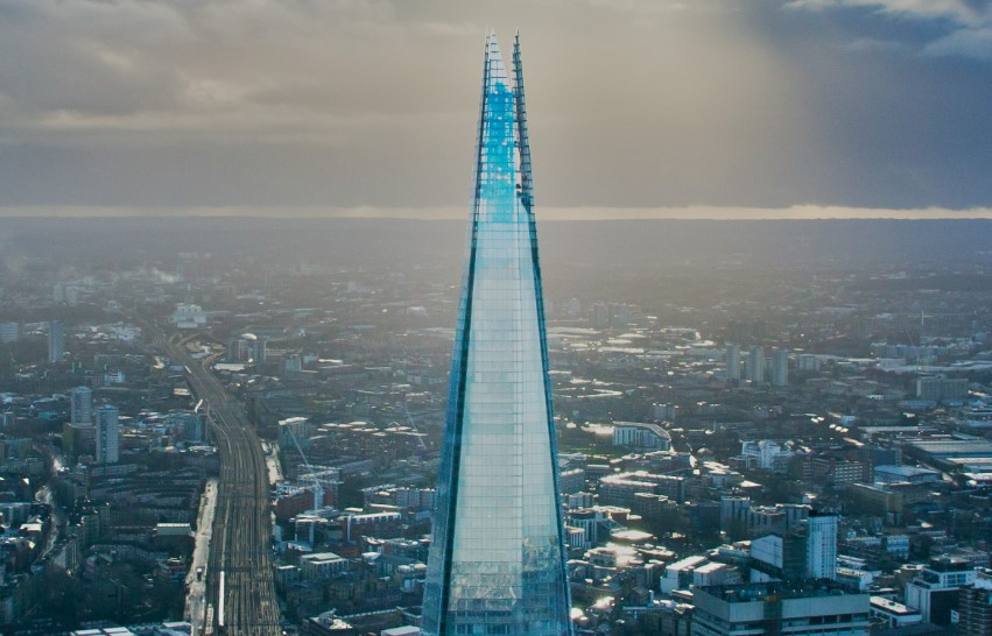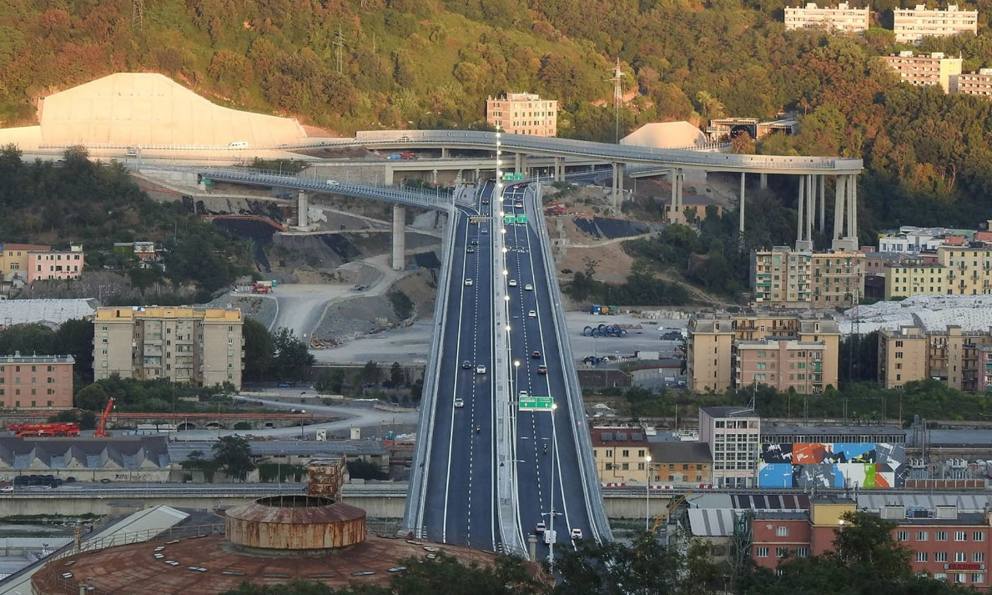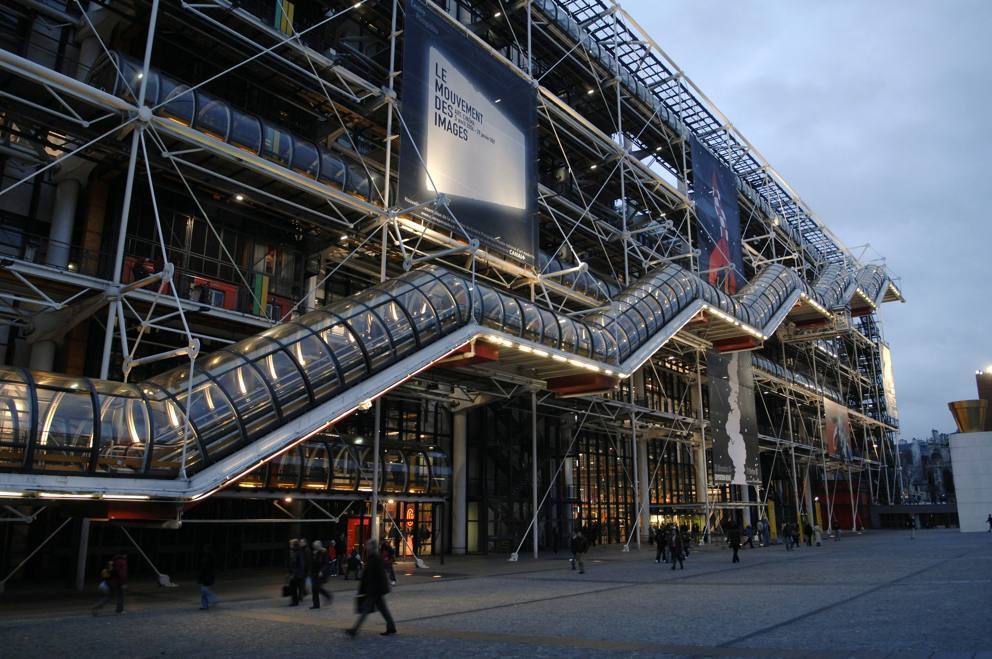According to the architect who designed the Science Gateway: “At a certain age, the only way to survive yourself is to work with young people”. Fabiola Gianotti, director-general of CERN: “In the night sky you look at the stars, we have to look into the emptiness and darkness”
Renzo Piano says he has worked with neuroscientists, with astrophysicists, now with particle physicists,and each time he has seen the same thing: “Human beings always dig deep, but at a certain point they stop when they get to the mystery. As Marguerite Yourcenar once said, the human being looks into the darkness, without looking away. And if you look into the darkness, at first you see nothing; then your eyes slowly get used to it. Because that darkness is not empty, it is inhabited by everything you have seen, read, heard and are about to imagine,, with that sublime stubbornness without which you never get to the heart of things. The important thing is to apply it to the right things”. The new CERN, which will open on 7 October, began before the pandemic, on the day when the world's most important Italian woman — director-general Fabiola Gianotti — went to Paris to visit the world's most famous Italian man, Renzo Piano, , and his wife Milly, and asked for advice on a new building: “Every year we receive 150,000 visitors and turn away another 150,000. We need more space to tell students, teachers and anyone interested, who we are and what we do, the beauty and usefulness of physics. A gateway to science. I understand, Renzo, that you are very busy, I already have designs from some local architects, but please, give me some advice”. At the end of the meeting, Milly Piano accompanied Fabiola Gianotti to the taxi and told her: “I think Renzo wants to do this”.

The construction site is almost finished, and it is called Science Gateway: precisely, the gateway to science. Renzo Piano designed a two-hundred-metre-long bridge, “almost a space laboratory landing”, which passes over the road and the border between Switzerland and France, and joins five structures. first is a 900-seat auditorium, which will be dedicated to Sergio Marchionne. The second — Piano explains— isa piece of what lies beneath, brought to the surface: the giant, 27-kilometre-long particle accelerator.Visitors will be able to see and understand how protons collide almost as fast as the speed of light. It is the mechanism that led to the discovery of the Higgs boson, known as the God particle. It is the closest humans have ever come to the mystery. “Einstein said that time is an illusion, — recalls Renzo Piano -- Our time can pass by very slowly or very quickly, our lives are very long and very short.
Borges wrote: "Time is the substance I am made of. It is a river which sweeps me along but I am the river. It is the tiger which destroys me but I am the tiger. It is a fire which consumes me but I am the fire”. The Big Bang, the explosion from which our universe was born, happened 13.8 billion years ago, a time we cannot even fathom; and it lasted an infinitely small amount of time that we cannot even grasp”.
Al Cern they went back in time to one millionth of a millionth of a second before the Big Bang..And they have managed to reproduce the same conditions as back then, the same temperature, a hundred trillion times higher than the temperature of this summer, which is sweltering even here in Geneva. Physicists have understood the how, not the why. What happened, not who did it. That is, if the 'Creator' exists. The other facilities are dedicated precisely to the study of the Big Bang and the quantum world.Renzo Piano has designed a building that breathes: “The air conditioning goes up through these little holes in the floor,we have planted four hundred trees all over, on the roof there are state-of-the-art solar panels; more energy is produced than is consumed.» There is also a facility dedicated to contemporary art: because, here, art and science are connected.
The render of the Science Gateway designed by Renzo Piano: the architect designed a 200-metre bridge as “a space laboratory landing” that passes over the road and the Swiss-French border (copyright RPBW)
CERN director-general arrives with her tray in hand and it is like being hit by a beam of protons. Imagine Rita Levi Montalcini with Enrico Mentana’s quick speaking and wit. “Your glasses have broken”. An arm came off, I will have to go to the opticians when I return to Italy. “Doesn’t matter, we have 3D printers! Give it here”. Everyone calls her by her first name, Fabiolà, pronounced in the French style. pHowever, she is very Italian: her father is from Asti, Piedmont (he lived to 101 years), her mother is from Palermo, Sicily (92 years), she was born in Rome, obtained her degree and PhD in Physics in Milan. She has been here forever: she came to CERN as a girl on a scholarship and never left. On the shelf in the control room are lined up empty bottles of champagne, used to celebrate great achievements. One photo reads the date '4 July 2012', discovery of the Higgs boson. “On that day,” Fabiola Gianotti tells, “CERN achieved the goal for which it was created in 1954: to bring the primacy of experimental physics back to Europe. We are now ahead of the United States. Americans and Chinese come to us”.
“I went to humanities high school, and it's not true what they say about Italian schools.Italian schools are still excellent today, here out of 17,000 scientists of a hundred and ten nationalities 2,500 are Italians, and they arrived by merit.. In high school, I studied physics a little bit; but I had a teacher who explained how physics works, how things work. And the fundamental physics is simple and elegant, based on principles of symmetry. But we exist because symmetry is not perfect. If matter and antimatter were present in equal parts in the universe, they would have annihilated, destroyed each other; and we would not exist.Instead, antimatter for some strange reason has disappeared; at CERN we are studying it, to find out what happened to it. In the night sky you look up at the stars. But stars, planets and matter only make up 5% of the universe. We have to look into the emptiness and darkness. I studied piano as a girl, still today I spend my Saturday afternoons playing. Many people ask me: why did you do something so different in life? But that's not true: “I find physics in music and music in physics”. Pope Francis wanted her in the Pontifical Academy of Sciences. "I came from a Catholic background. But physics can never prove or rule out the existence of God”. What about extraterrestrial life? “God most probably exists. Because it is very unlikely that on any other planet in a huge universe the conditions that made life possible on Earth have been reproduced. But it could be a very different life form from ours”.How do you envision afterlife? "Like an immense space, in which I hope individualities are not lost; because we are all so different, so interesting. Ah, here, your glasses are ready, see the new titanium arms? You no longer have to go to the opticians”.




With Piano we descend into the cave where it all happens: about one hundred metres underground, inside the ATLAS detector, where the Higgs boson was discovered and is now being studied. The detectors are the places where the collisions occurring in the 27-kilometre-long accelerator, which protons travel through eleven thousand times in a second, are 'photographed'; now there are plans for a new 90-kilometre-long accelerator, to be run under Lake Geneva. One enters with eye recognition, a detail that inspired Dan Brown's terrifying opening words in 'Angels and Demons'. The lift is fast, but seen from below from the shaft the huge machine is impressive.
«“Here we do not only study particles”, says Piano. From CERN came the word wide web, in short the www, and it was gifted to the world. This is where the technologies of PET and new cancer treatments were created. Superconducting cables are made in order not to waste energy. In New York, Piano built the centre for neuroscience at Columbia University, the MBB — Mind Brain Behaviour —, for the study of the mind, the brain, behaviour; now he is building 'Climate Change', the new building where the climate revolution will be studied. "Everything is held. The sciences work together. Scientists collaborate, because they have realised that we are at a turning point in the history of mankind, and it is wrong to describe this time only as a great crisis. Wonderful things happen, great discoveries are made, solutions are found. It is precisely in the fields of science, medicine, climatology, but also human solidarity, that we are witnessing the somewhat tentative emergence, around the world,of a fluid network of global affinities. That they will be the salvation of our planet”.». Here even physicists walk around with screwdrivers in their pockets, and many are under 30 years old."I work among young people, and I assure you that they are extraordinary. The only way to survive yourself, at a certain age and with a long journey behind them, is to work with them..We old men must behave like the Japanese masters of the Ise temple, which is rebuilt every twenty years. Young people come, between the ages of 20 and 40 they learn how to build the temple, from 40 to 60 they build the temple, and from 60 to 80 they teach how to build the temple”.
Renzo Piano will be 86 in a few days, and he said he wanted to die on the construction site. Not in this case, though,the lift goes up the shaft, back to the warmth of the surface, back into the Science Gateway. "CERN has a budget of 1.2 billion, but the new building is only the result of donations and costs less than 100 million: that is less than the daily cost of a bomber that wreaks death and destruction”. Piano tells that his job is to build places of peace, be they museums, concert halls, universities, research laboratories, hospitals like the ones he did in Africa with his friend Gino Strada. "We are all embarked on the same spaceship, with an unknown destination. Waging war against each other is like fighting on a bus. All the more so in Europe, which is a widespread big city: because the opposite of the city is not the countryside, it is the desert; and in Europe there are no deserts”.
One thousand Russian and one hundred Ukrainian scientists work at CERN, and they prodigiously continue to collaborate. Among the member states is Israel, which offers scholarships to Palestinian researchers. “In architecture today, the aim is to provide shelter for communities", Piano explains, "and for this we also need primary beauty, not in the caricatured sense that the word has taken on: beauty, beauté, brings to mind a beauty parlour. The good we must recover is the 'kalòs' of the Greeks, which is also the good. ‘I swear to return Athens to the Athenians more beautiful than you delivered it to me’: the oath of politicians in the time of Pericles should also be ours”.
Source: Corriere Della Sera